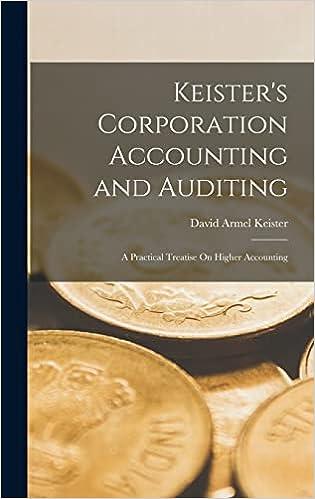

Aero Manufacturing produces several types of bolts used in aircraft. The bolts are produced in batches according to customer orders. Although there are a variety of bolts, they can be grouped into three product families. Because the product families are used in different kinds of aircraft, customers also can be grouped into three categories, corresponding to the product family that they purchase. The number of units sold to each customer class is the same. The selling prices for the three product families range from $0.50 to $0.80 per unit. Historically, the costs o order entry, processing, and handing were expensed and not traced to in dual customer ou s These costs a e not w aand total e , ?. 00 i e most recent year. Furthermore these costs had been ncreasing over me ecent . the company started emphasizin a cost reduction strategy no eve? an' cos eduction decisions had to contribute to the creation of a competitive advantage. Because of the magnitude and growth of order-filling costs, management decided to explore the causes of these costs. They discovered that order-filling costs were driven by the number of customer orders processed. Further investigation revealed the following cost behaviour for the order-filling activity: Step-fixed cost component: $50,000 per step (2,000 orders define a step) Variable cost component: $20 per order Aero currendy has sufficient steps to process 100,000 orders The expected customer orders for the year total 100,000. The expected usage of the orderfilling activity and the average size of an order by customer category follow Number of orders Average order size Category I Category Category III 30,000 1,000 50,000 600 20,000 1,500 As a result of cost behaviour analysis, the marketing manager recommended the imposition of a charge per customer order. The president of the company concurred. The charge was mplemented by adding the cost per order to the price of each order (computed by using the projected ordering costs and expected orders). This ordering cost was then reduced as the size of the order increased and was eliminated as the order size reached 2,000 units (the marketing manager indicated that any penalties imposed for orders greater than this size would lose sales from some of the smaller customers). Within a short period of communicating this new price information to customers, the average order size for all three product families increased to 2,000 units. Aero Manufacturing produces several types of bolts used in aircraft. The bolts are produced in batches according to customer orders. Although there are a variety of bolts, they can be grouped into three product families. Because the product families are used in different kinds of aircraft, customers also can be grouped into three categories, corresponding to the product family that they purchase. The number of units sold to each customer class is the same. The selling prices for the three product families range from $0.50 to $0.80 per unit. Historically, the costs o order entry, processing, and handing were expensed and not traced to in dual customer ou s These costs a e not w aand total e , ?. 00 i e most recent year. Furthermore these costs had been ncreasing over me ecent . the company started emphasizin a cost reduction strategy no eve? an' cos eduction decisions had to contribute to the creation of a competitive advantage. Because of the magnitude and growth of order-filling costs, management decided to explore the causes of these costs. They discovered that order-filling costs were driven by the number of customer orders processed. Further investigation revealed the following cost behaviour for the order-filling activity: Step-fixed cost component: $50,000 per step (2,000 orders define a step) Variable cost component: $20 per order Aero currendy has sufficient steps to process 100,000 orders The expected customer orders for the year total 100,000. The expected usage of the orderfilling activity and the average size of an order by customer category follow Number of orders Average order size Category I Category Category III 30,000 1,000 50,000 600 20,000 1,500 As a result of cost behaviour analysis, the marketing manager recommended the imposition of a charge per customer order. The president of the company concurred. The charge was mplemented by adding the cost per order to the price of each order (computed by using the projected ordering costs and expected orders). This ordering cost was then reduced as the size of the order increased and was eliminated as the order size reached 2,000 units (the marketing manager indicated that any penalties imposed for orders greater than this size would lose sales from some of the smaller customers). Within a short period of communicating this new price information to customers, the average order size for all three product families increased to 2,000 units








